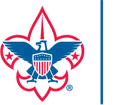Swimming and Water Safety
Swimming and Water Safety: Staying Safe and Having Fun in the Water
Swimming is a fundamental skill in Scouting, offering both fun and essential life-saving techniques. Whether you’re at a pool, lake, or ocean, Scouts learn how to stay safe around water while building their confidence as swimmers. Understanding basic swimming strokes, water rescue techniques, and how to recognize water hazards ensures that Scouts can enjoy aquatic activities safely.
Basic Swimming Strokes
Mastering a few basic swimming strokes allows Scouts to move confidently and efficiently through the water. The four main strokes taught in Scouting are the front crawl (freestyle), backstroke, breaststroke, and sidestroke. Each stroke is designed for different purposes, whether it’s speed, endurance, or relaxation. Knowing how to use these strokes helps build strong swimming skills for any water environment.
_Suggested Pictures:
- A Scout demonstrating the front crawl in a pool
- A close-up of a Scout swimming the breaststroke_
Youtube Video: “How to Swim: Learning the Basic Strokes”
Water Safety Rules
Before diving into any water activity, it’s important to follow essential water safety rules. Scouts are taught to always swim with a buddy, avoid swimming alone, and stay within designated swimming areas. Wearing a life jacket when boating or in deep water is critical, especially if you’re not a strong swimmer. Water safety rules protect everyone and prevent accidents before they happen.
_Suggested Pictures:
- Scouts swimming together with a buddy system in a lake
- A Scout wearing a life jacket while preparing to go boating_
Youtube Video: “Top 10 Water Safety Rules for Scouts”
Understanding Water Hazards
Scouts learn how to recognize and respond to common water hazards, including strong currents, sudden drop-offs, and cold water conditions. In rivers and oceans, understanding rip currents and how to escape them is essential for staying safe. Scouts are also taught to check water conditions, weather forecasts, and identify areas where swimming might be dangerous.
_Suggested Pictures:
- A Scout standing near a river, assessing the water conditions
- An illustration of rip currents and how to swim out of them_
Youtube Video: “How to Identify and Avoid Water Hazards”
Water Rescue Techniques
Knowing how to perform basic water rescues is a key component of water safety. Scouts practice techniques like reach, throw, row, and go to safely assist someone in trouble without putting themselves at risk. Throwing a flotation device or using a reaching tool can often help save someone without needing to enter the water. For more advanced rescues, learning lifesaving strokes like the sidestroke with a rescue tube helps prepare Scouts for emergency situations.
_Suggested Pictures:
- A Scout throwing a flotation device to a swimmer in distress
- A group of Scouts practicing water rescue techniques with a lifeguard_
Youtube Video: “Water Rescue Techniques: Reach, Throw, Row, and Go”
First Aid for Water Emergencies
In addition to knowing how to swim and rescue, it’s important for Scouts to be familiar with basic first aid techniques related to water emergencies. This includes treating hypothermia, performing CPR, and recognizing the signs of drowning or shock. Quick action can save lives, so Scouts are trained to act confidently in these situations.
_Suggested Pictures:
- A Scout performing CPR on a practice dummy during first aid training
- A Scout wrapping a blanket around someone with hypothermia after a water rescue_
Youtube Video: “CPR and First Aid for Water Emergencies”
Boating and Canoeing Safety
Many Scouting activities involve boating or canoeing, making water safety even more important. Scouts are taught to wear life jackets at all times, understand boating regulations, and know how to respond if a boat capsizes. Canoeing requires teamwork and balance, with additional training in self-rescue and assisting others if someone falls overboard.
_Suggested Pictures:
- Scouts wearing life jackets while paddling a canoe on a calm lake
- A Scout practicing how to recover after a canoe capsizes_
Youtube Video: “Canoeing Safety and Self-Rescue Techniques for Scouts”
Swimming in Different Environments
Swimming in lakes, rivers, and oceans comes with different challenges than swimming in a pool. Scouts learn how to adapt to these environments by understanding water temperatures, currents, and waves. They are taught to be cautious of unclear water, underwater obstacles, and wildlife. These skills ensure that Scouts can confidently swim and enjoy various aquatic settings.
_Suggested Pictures:
- Scouts swimming in a clear lake with a lifeguard nearby
- A Scout navigating waves while swimming at the beach_
Youtube Video: “Swimming Safety Tips for Lakes, Rivers, and Oceans”
Lifesaving Merit Badge
The Lifesaving Merit Badge is a challenging but rewarding achievement for Scouts, requiring advanced swimming and water rescue skills. Earning this badge involves mastering rescue techniques, lifesaving strokes, and CPR. It demonstrates a Scout’s ability to handle emergency situations in the water and teaches them how to protect themselves and others.
_Suggested Pictures:
- A Scout practicing lifesaving strokes during a training session
- A Scout receiving the Lifesaving Merit Badge during a ceremony_
Youtube Video: “How to Earn the Lifesaving Merit Badge”
Swimming and water safety skills are critical for any Scout who spends time near the water. By learning to swim confidently, follow water safety rules, and assist others in need, Scouts ensure that they are prepared for fun and safe aquatic adventures. Explore the videos and resources above to improve your water skills and be ready for your next swim!


